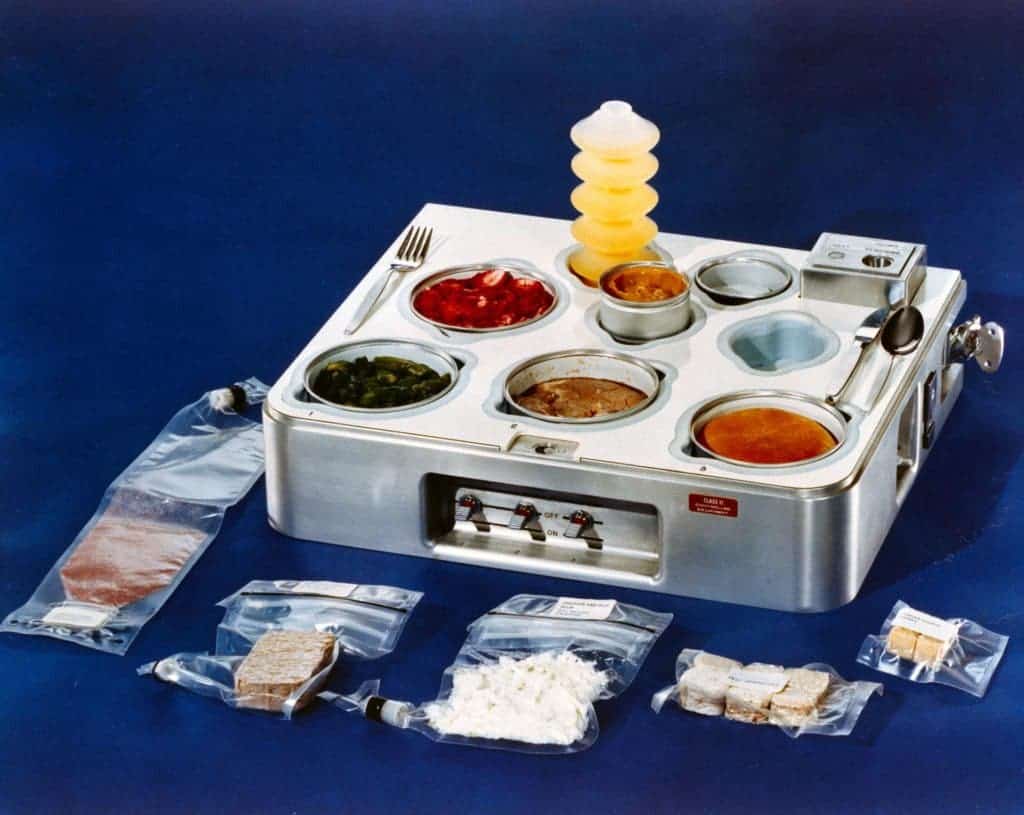
Many of you reading this hope to one day be able to explore outer space; the thrill of discovery, entwined with the peace and solitude that only the silent void can provide. It’s awesome stuff, I’m completely on board. But as it usually goes, great adventures come with great sacrifices.
Little comforts, like hanging out with friends, enjoying a movie, or holding a cup of hot chocolate in your hands by the fire tend to be the first to go for more practical concerns, like efficiency and ease of transport. Would-be space explorers like ourselves know this already. We’re here for the good of all, the call of wanderlust, and we’re glad to sacrifice part of our comforts on the altar of human exploration.
The real question is…Do you have the stomach for the trip?
First meals in space
The first meals in space were…Pretty horrible.
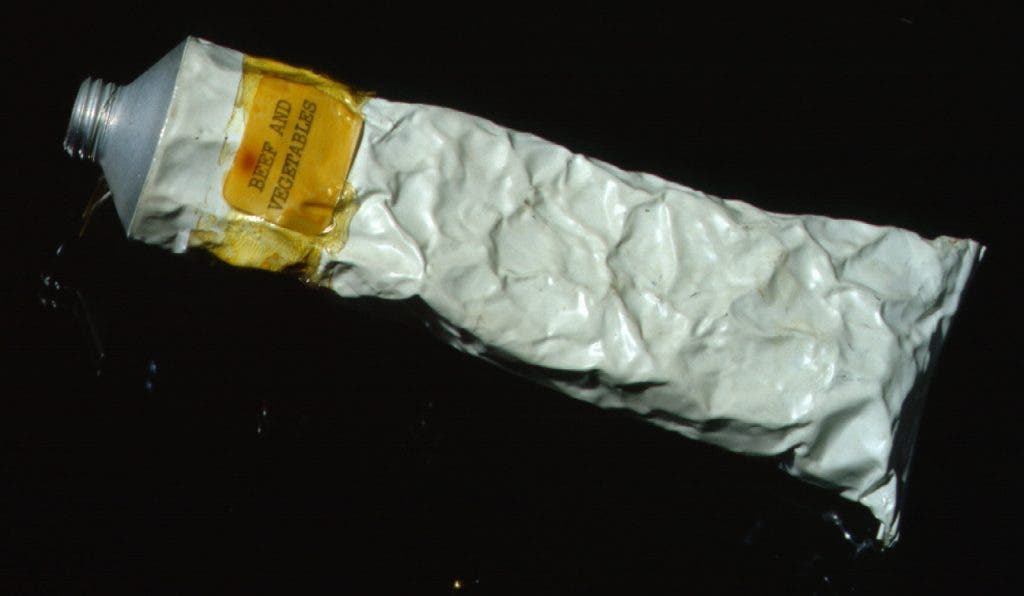
John Glenn was the first American to have a bite in orbit, and while he found the actual process of eating pleasant enough, the menu was more to be endured than enjoyed: bite-sized cubes, freeze-dried powders, and semi-liquids stuffed in aluminum tubes.
During the Project Mercury flights, astronauts complained that the chow was unappetizing and that they disliked squeezing the tubes, the freeze-dried courses were nearly impossible to re-hydrate, and crumbs from the cubes would float through the cabin and interfere with the wiring in the walls. It was a disheartening business and something had to be done. Thankfully, NASA took this seriously and things started to look up nom-wise for our intrepid explorers.
On the Gemini mission, the aluminum tubes were scrapped altogether. A special gelatin coat was applied to the cubes to reduce crumbling, and the freeze-dried foods were packaged in a special plastic container to make reconstitution easier. Variety improved too, with shrimp cocktail, chicken and vegetables, butterscotch pudding, and applesauce on the menu.
This didn’t exactly bode well with all astronauts. John Young launched to Earths’ orbit aboard the Gemini 3 some 50 years ago. With him was crewmate Gus Grissom and a two days old corn beef sandwich, smuggled without permission on the spacecraft.
Grissom: What is it?
Young: Corn beef sandwich.
Grissom: Where did that come from?
Young: I brought it with me. Let’s see how it tastes. Smells, doesn’t it?
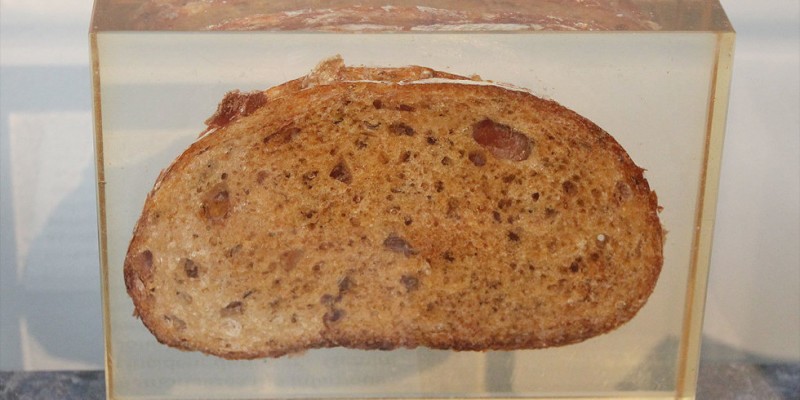
Suffice to say, even after two bites, the sandwich crumbled into thousands of pieces which spread out through the spacecraft. It was a novice move, but nothing bad happened.
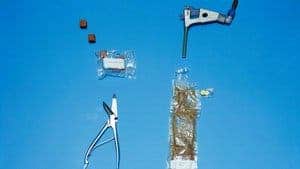
Food packages of beef and gravy fully reconstituted and ready to eat. The water gun is used to reconstitute dehydrated food and the scissors are used to open the packages to eat.
Image via airandspace
By the time the Apollo program was off the ground, both quality and variety increased even further. The crew had access to hot water to improve freeze-dried food preparation, and a new “spoon bowl” container made it more enjoyable to actually get the food where it’s needed — your belly.
How do they make these tasty concoctions?
The main concern of the space agency is to keep the food as light as possible while making sure they’re nutritious, tasty, and stable without refrigeration for as long as they possibly can. The usual foods an astronaut has available include rehydratable, thermostabilized, intermediate moisture, irradiated, and natural form courses, which must provide an astronaut with at least 2,500 calories per day.
Rehydratable foods are items that have had their water content extracted, basically super-dry foods. This is done to conserve weight, but also to stop the items from spoiling: the bacteria that decompose foods require water just as much as we do, and find it hard to survive in this bone-dry environment. Thankfully for the crew, shuttle fuel cells, that combine oxygen and hydrogen for electricity also provide ample reserves of water for them to mix with the course before eating.

From soups — like chicken consomme and cream of mushroom — to macaroni and cheese or chicken and rice casseroles, appetizers — like shrimp cocktail — and breakfast foods — like scrambled eggs and cereals — many types of food are usually prepared this way.
Thermostabilized food is heat processed and sealed; in essence, this category includes canned foods, be it in aluminum or bimetallic cans, plastic cups, or chow in flexible retort pouches.

Image via Tech Times
Courses such as beef tips with mushrooms, tomatoes and eggplant, chicken a la king, and ham are prepared this way.
Intermediate moisture foods have just the right level of water content to prevent microbial growth while allowing the food to maintain its soft texture and to be eaten without further preparation — usually between 15 to 30 percent water content, but the water molecules are chemically tied and can’t support microbial growth. The most common preparation process is salting or sugaring.
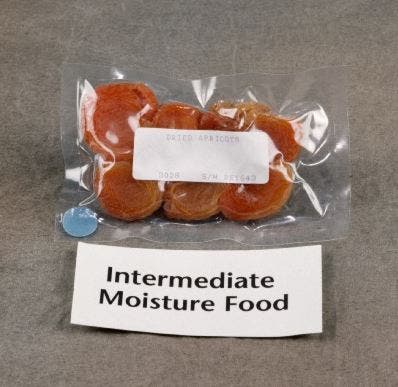
Dried peaches, pears, or apricots and dried beef are examples of this type of Shuttle food.
On the other hand, Natural form foods are packed as-is in clear, flexible pouches. They are ready to eat with no preparation required. NASA classifies foods such as nuts, granola bars, and cookies as natural form foods.
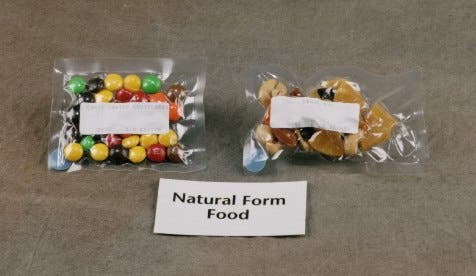
And lastly, Irradiated foods are cooked, packaged in foil-laminated pouches, and sterilized by treatment with ionized radiation, to remain stable at room temperature.
Beefsteak is currently the only irradiated product intended for space consumption.
What astronauts eat today for breakfast, lunch, and dinner

Image via Wikipedia
Today’s astronauts dine better than any before. On the ISS, due to constraints regarding water generation, most of the food will be delivered frozen, refrigerated, or thermostabilised once every 90 days. Astronauts will cook these in microwave ovens and the better quality of the food, together with cutlery that won’t float away and sitting while eating, make for a much more filling meal. Different nations are also supplying their astronauts with traditional courses, helping the crew socialize and share cultures.
Food choice is extremely important to astronauts, and the longer the flight, the more significant those choices become:
“Being on Space Station, so much of what is going on is beyond their control,” said Vickie Kloeris, JSC manager of Space Food Systems.
“And so food is just a comfort thing that they would like to feel they have some input on or some control over. It’s just a big psychological thing — I don’t know if we’ve flown anyone to Station that has not been concerned about their food.”
Crew members can pick what they want to eat, so if they feel chicken three nights in a row, they can do that.
Compared to sucking applesauce through a tube, dining in space has gone a long way. Station farms are also being tested, and soon ships might be able to produce some or all of their food for long voyages.






